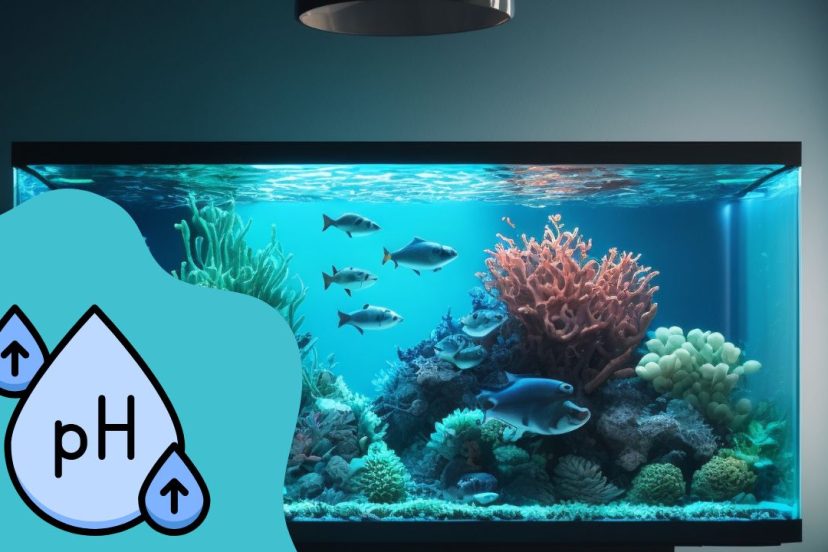How to Raise PH in Saltwater Aquarium
Understanding pH Levels in a Saltwater Aquarium
Understanding pH levels is essential for maintaining a healthy saltwater aquarium. The pH level of the water in your aquarium can affect the health of your fish, plants, and coral. A pH level measures the acidity or alkalinity of the water, with a pH of 7 being neutral. In a saltwater aquarium, a pH of 8.2 to 8.4 is recommended for optimal health. However, many aquarium owners may face the challenge of low pH levels and wonder how to raise pH in saltwater aquariums.
What is pH?
pH is a measure of the acidity or alkalinity of a substance. In the case of saltwater aquariums, pH levels range from 7.8 to 8.5, with 8.2 to 8.4 being the ideal range for most marine organisms.
Why is pH Important in a Saltwater Aquarium?
pH plays a crucial role in the health and wellbeing of marine organisms. When pH levels fall below the ideal range, it can stress the fish and other organisms, making them more susceptible to diseases and infections. Lower pH levels can also impact the effectiveness of certain filtration systems, leading to a less healthy environment for marine life.
What is the Ideal pH Level for a Saltwater Aquarium?
The ideal pH level for a saltwater aquarium is between 8.2 and 8.4. While some marine organisms may tolerate levels outside of this range, it’s essential to maintain pH levels as close to ideal as possible.
Identifying Low pH Levels
Signs of Low pH Levels in a Saltwater Aquarium
Low pH levels in a saltwater aquarium can be identified by several signs, including:
- Sluggish or stressed fish
- Algae growth
- Coral recession
- Cloudy or murky water
- Slow or stagnant water flow
Measuring pH Levels
Measuring pH levels in a saltwater aquarium is essential to maintain healthy levels. There are various types of pH measurement kits on the market, including test strips and liquid test kits.
Causes of Low pH Levels in a Saltwater Aquarium
Biological Factors
Biological factors can contribute to low pH levels in a saltwater aquarium. For example, overcrowding can increase the buildup of waste, leading to increased CO2 levels and lower pH levels.
Chemical Factors
Chemical factors can also impact pH levels. For example, certain types of algae and corals can reduce pH levels by absorbing minerals and other nutrients from the water.
Tips to Raise pH in a Saltwater Aquarium
Adding Coral
Adding coral can be an effective way to raise pH levels in a saltwater aquarium. Specifically, adding live rock, limestone, and shells can help raise pH levels by releasing calcium carbonate into the water.
Water Changes
Regular water changes can also help to raise pH levels in a saltwater aquarium. Freshwater can help dilute any acids in the water, raising the overall pH level.
Using Baking Soda
Baking soda, or sodium bicarbonate, can also be effective at raising pH levels in a saltwater aquarium. It is important to carefully measure and gradually add baking soda to avoid an abrupt and drastic increase in pH levels.
Aeration
By increasing water circulation and aeration, hobbyists can help to raise pH levels in a saltwater aquarium. This is because increased aeration helps to remove CO2 buildup, reducing acidity levels in the water.
Best Practices for Maintaining pH Levels
Regular Maintenance on How to Raise PH in Saltwater Aquarium
Performing regular maintenance tasks, such as water changes and cleaning filters, can help to maintain pH levels in a saltwater aquarium. Additionally, keeping a schedule for testing pH levels and tracking changes can help to identify any problems early on.
Monitoring pH Levels
Hobbyists should regularly monitor pH levels in their saltwater aquariums, using both test kits and observing the behavior of their fish and other marine organisms.
Balanced Feeding
Feeding marine organisms a balanced diet can also help to maintain pH levels. Overfeeding can increase waste buildup and lower pH levels, so it is important to feed only what is necessary.
Conclusion
Maintaining proper pH levels in a saltwater aquarium is crucial to the health and wellbeing of marine organisms. By following the tips and techniques outlined in this article, hobbyists can effectively raise pH levels and maintain a healthy and thriving saltwater aquarium.
FAQs on How to Raise PH in Saltwater Aquarium
How often should I test my aquarium’s pH levels?
It is recommended to test pH levels at least once a week.
Can adding too much baking soda harm my aquarium?
Yes, adding too much baking soda can cause a sudden and drastic increase in pH levels, which can harm the marine organisms in your aquarium.
Do all marine organisms require pH levels between 8.2 and 8.4?
No, some marine organisms can tolerate pH levels outside of this range. However, it is important to maintain pH levels as close to ideal as possible.
Should I add live rock to my saltwater aquarium to raise pH levels?
Yes, adding live rock can help to raise pH levels in a saltwater aquarium by slowly releasing calcium carbonate into the water.
How can I prevent low pH levels in my saltwater aquarium?
Maintaining proper filtration, avoiding overfeeding, and performing regular maintenance tasks can all help to prevent low pH levels in a saltwater aquarium.




